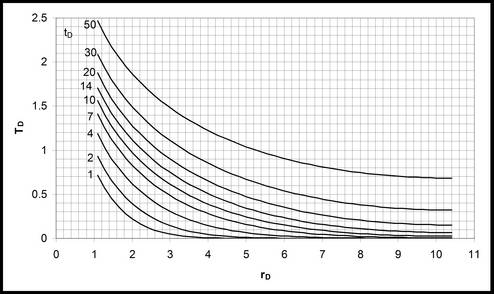Lab Fluid Flow, Heat & Mass Transfer
Course subject(s)
Activities

To obtain hands-on experience with real data a laboratory exercise is conducted during the course with small groups of students. Under the supervision of a laboratory assistant the students prepare the experiment described in the pdf-file below. The goal of the experiment is to determine the thermal properties of a solid (salt or concrete) by measuring the temperature profile within the solid as it is heated from the core. What makes this problem especially interesting for Geoscientists and Engineers is that it is mathematically equivalent to slightly compressible Darcy flow in an aquifer or oil reservoir – that is, a well test. In a well test pressure is measured at the well, whereas here temperature is measured in the surrounding medium. The principle of superposition, crucial to interpreting well tests, applies here as well.
After the experiment is conducted the students use the data to calculate the thermal properties of the solid and prepare several dimensionless plots of the data. To do this students must use the principals of superposition presented in lecture 10.
When the calculation and plots are made the results are presented in a small report that counts towards the final grade.

Fluid Flow, Heat & Mass Transfer by TU Delft OpenCourseWare is licensed under a Creative Commons Attribution-NonCommercial-ShareAlike 4.0 International License.
Based on a work at https://ocw.tudelft.nl/courses/fluid-flow-heat-mass-transfer/.



